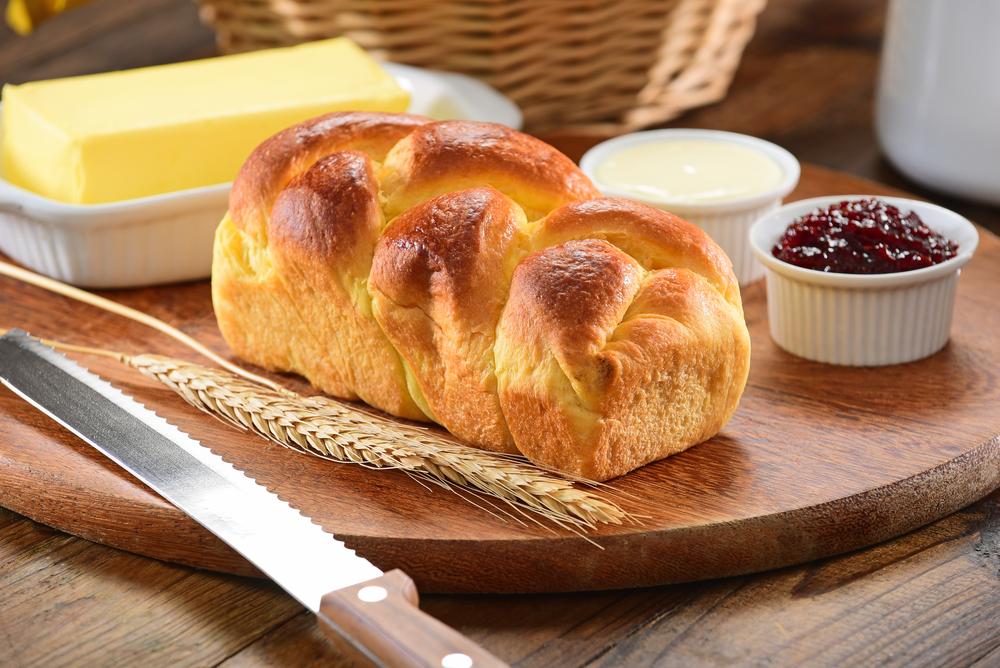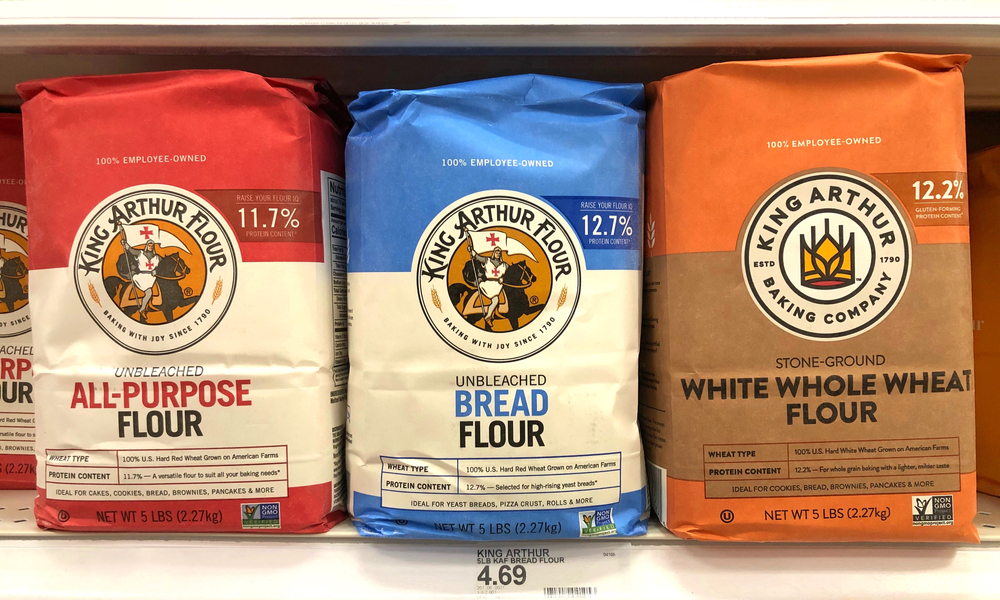Brioche
Brioche is a common French bread that has a high egg and butter content, giving it a rich and tender consistency. In many ways it is a combination of a bread and a pastry, baked in the same way as bread but with ingredients such as eggs, butter, and milk more akin to a pastry. Brioche is commonly eaten for breakfast, with tea, or as part of a dessert.
Recipe Servings: 30
Prep Time
2 hours 10 minutes
+ 11 hours resting
+ 11 hours resting
Cook Time
30 minutes
Total Time
13 hours 40 minutes
Vegetarian
Vegan
Gluten Free
Dairy Free
Kosher
Halal
Ingredients
- 1/3 cup (80 ml) whole milk, warm
- 1 packet active dry yeast
- 1 large egg
- 2 cups (240 g) unbleached all-purpose flour, divided
- 1/3 cup (65 g) sugar
- 1 tsp (5 ml) kosher salt
- 4 large eggs, lightly beaten, at room temperature
- 1½ (180 g) cups unbleached all-purpose flour, divided
- ¾ cup (180 g) unsalted butter, at room temperature
Directions
- Combine milk, yeast, egg, and 1 cup (120 g) flour, mixing until everything is just blended.
- Sprinkle remaining 1 cup (120 g) flour to cover the sponge mixture.
- Let sponge rest uncovered for 30–40 minutes. After this time, the flour coating should crack, indicating the dough is progressing as it should.
- Add sugar, salt, eggs, and 1 cup (120 g) flour to the sponge, mixing for a 1–2 minutes, just until the ingredients begin to come together.
- Sprinkle in ½ cup flour while continuing to mix.
- Beat mixture for about 15 minutes, stopping to scrape the bowl as needed.
- Work the butter until it is the same consistency of the dough by either hitting it with a rolling pin or smearing it across a clean surface with a dough scraper. The ready butter should be smooth, soft, and cool, not warm, greasy, or oily.
- Add butter a few spoonfuls at a time and the dough should begin to fall apart at this point.
- Continue mixing dough for about 5 minutes, until the dough comes together once again and is soft and sticky. If it doesn't come together after a few minutes of mixing, add 1 tablespoon (15 ml) flour.
- Transfer dough to a very large buttered bowl, cover tightly with plastic wrap, and let it rise at room temperature from about 2–2½ hours, until doubled in size.
- Deflate dough by placing your fingers under it, lifting a section, and then letting it fall back into the bowl.
- Work your way around the outside of the dough, lifting and releasing.
- Cover the bowl tightly with plastic wrap and refrigerate it overnight, or for at least 6 hours. It will continue to rise and may double in bulk again.
- Remove dough from refrigerator and divide it into thirds.
- Divide each section into six equal pieces and shape each piece into a ball on a lightly-floured surface.
- Grease three loaf pans.
- Place six balls side-by-side in one of the greased loaf pans so that you have 3 short rows, each with two balls of dough. Do the same with the other two pieces (12 balls) of brioche dough.
- Cover pans with plastic and let dough rest at room temperature until doubled in bulk, about 2 hours.
- Preheat the oven to 375°F (190°C).
- Brush each loaf with egg wash, taking care not to let the glaze dribble into the pan.
- Using sharp scissors, snip a cross in each ball of dough.
- Bake loaves for about 30 minutes, or until an instant read thermometer reads 200°F (93°C).
- Transfer loaves to a wire rack and let cool to room temperature.
For Sponge:
For Bread:
Copyright © 1993—2025 World Trade Press. All rights reserved.

 France
France 
